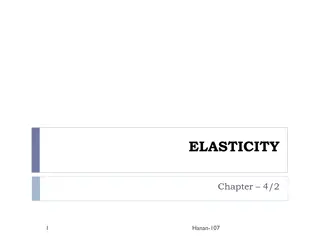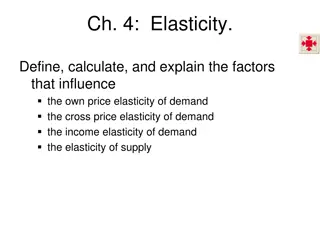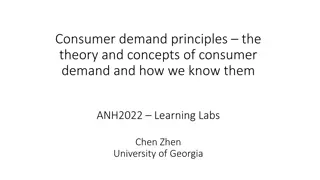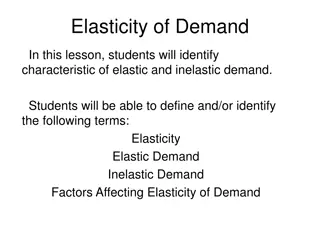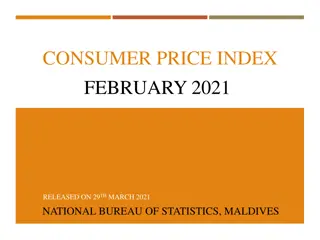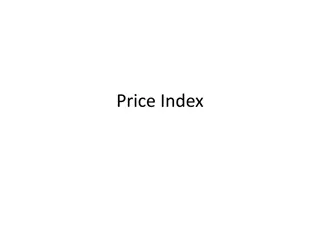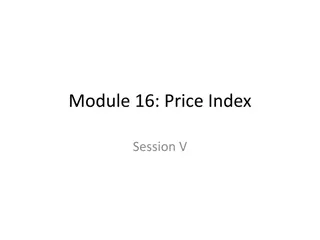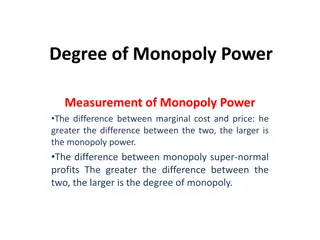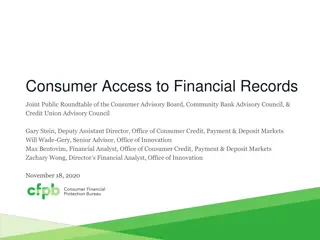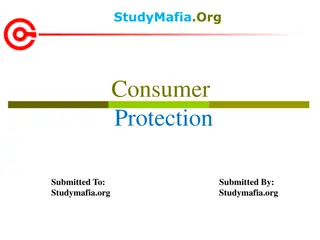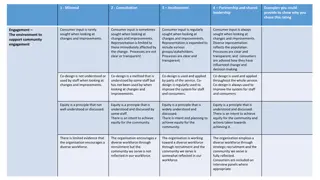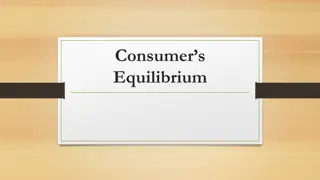Understanding Price Elasticity in Consumer Behavior
Explore the concept of price elasticity and its impact on consumer behavior through examples ranging from Nikes to Starbucks lattes. Learn how consumers respond to price changes and the importance of elasticity in determining market dynamics. Delve into the interactive activity provided to deepen your understanding of price elasticity.
Download Presentation

Please find below an Image/Link to download the presentation.
The content on the website is provided AS IS for your information and personal use only. It may not be sold, licensed, or shared on other websites without obtaining consent from the author. Download presentation by click this link. If you encounter any issues during the download, it is possible that the publisher has removed the file from their server.
E N D
Presentation Transcript
Price Elasticity: From Tires to Toothpicks Price Elasticity: From Tires to Toothpicks
If the price of Nikes dropped by 25%, how likely would you be to buy more Nikes? If the price of a Starbucks lattes increased by 25%, how likely would you be to buy fewer lattes? If the price of electricity in your home changed by 25%, how likely would you be to change your electricity usage? Price Elasticity: From Tires to Toothpicks
Ceteris paribus, as the price of a good increases, quantity demanded decreases; conversely, as the price of a good decreases, quantity demanded increases. Price Elasticity: From Tires to Toothpicks
Elasticity measures the responsiveness of demand (or supply) to an increase or decrease in the price of a good/service. Elastic: Consumers are very responsive to a price change. Inelastic: Consumers are not very responsive to a price change. Price Elasticity: From Tires to Toothpicks
> 1 Elastic: Consumers are very responsive to a price change. = 1 Unit elastic: Consumers response to a price change is exactly proportional. < 1 Inelastic: Consumers are not very responsive to a price change. Price Elasticity: From Tires to Toothpicks
Work in a group of 2-3 Click on the interactive activity at https://archive.econedlink.org/interactives/EconEdLink-interactive- tool-player.php?filename=em551_comparing_list2.swf&lid=551 Use the table on the Mackinac Center for Public Policy website to answer the questions Submit the questions using the email form provided Price Elasticity: From Tires to Toothpicks



